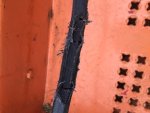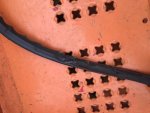2003 Tiger Cub (48" cutter deck) which still has the long belt unfortunately.
Previous owner fitted a genuine Scag belt just before I bought it. That one lasted about 15 hours before snapping.
I then fitted a Continental PowerSpan belt (SPB3750) - this one reverted and got caught in the clutch after 10 hours.
Bought another Continental and this one is 5 hours in but looks like it isn't going to last much longer.
All pulleys and idler pulleys are new and in line. All I can think of is the belt size.
Scag list the belt as 482529 - quick search says this is 148" ? The Continental is 147"
Would the extra tension cause premature failure ?
Previous owner fitted a genuine Scag belt just before I bought it. That one lasted about 15 hours before snapping.
I then fitted a Continental PowerSpan belt (SPB3750) - this one reverted and got caught in the clutch after 10 hours.
Bought another Continental and this one is 5 hours in but looks like it isn't going to last much longer.
All pulleys and idler pulleys are new and in line. All I can think of is the belt size.
Scag list the belt as 482529 - quick search says this is 148" ? The Continental is 147"
Would the extra tension cause premature failure ?



